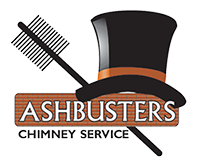Homeowners who are tired of soot and smoke often install a gas fireplace in their masonry chimney system. This does not eliminate the need for chimney maintenance. Acid created by a gas fireplace can eat away at the inside of the chimney. Annual chimney inspection reveals potential problems from gas fireplace emissions before these become expensive or deadly.

A gas fireplace vents its exhaust through a chimney. Though it does not produce visible soot like wood does, it can deposit corrosive acids into the chimney. External symptoms may not exist so homeowners are unaware of the damage being created. By the time the exterior of the chimney shows signs of damage, repairs can be expensive and the integrity of the home may be threatened.
The best way to ensure proper operation of a gas fireplace with a masonry chimney is to have a certified chimney sweep inspect the installation. The resulting information allows the installer to match the fireplace to the chimney. Correct pairing of the heating and venting systems ensures safe and efficient operation. This is especially important when using a high-efficiency gas fireplace with an older chimney.
To burn gas, the fireplace must intake air for combustion. Acid and chlorides contained in this air can be taken in by the fireplace. When water mixes with chlorides, hydrochloric acid results. During combustion, water vapor is produced and if the system does not contain enough heat, this vapor converts to liquid form and creates hydrochloric and other acids.
Corrosion created when water condenses inside the chimney flue can eventually cause the chimney liner to crumble. This may create debris that results in a blockage within the chimney. Deadly carbon monoxide may be unable to escape through the chimney and could travel back into the home. To prevent this from happening, have annual inspections performed by a certified chimney sweep.
